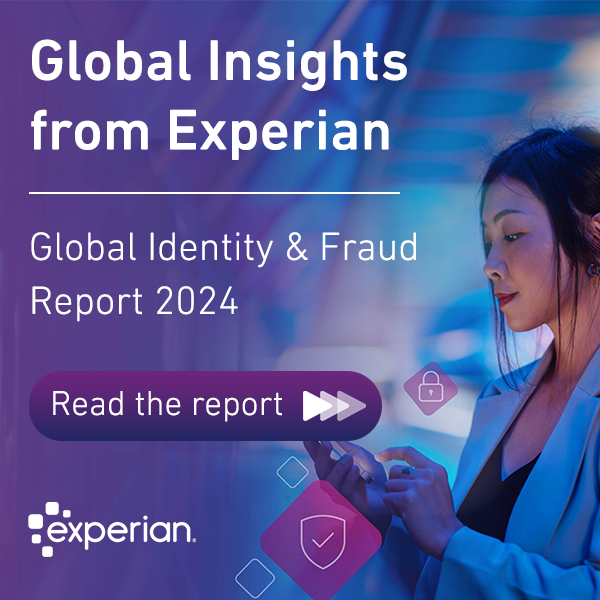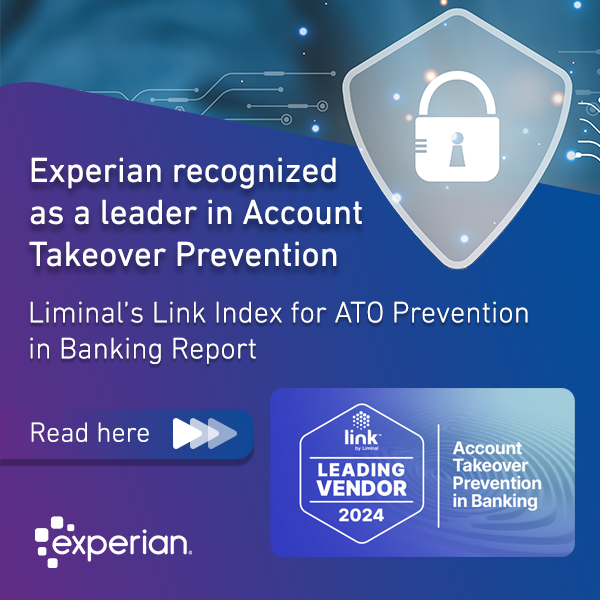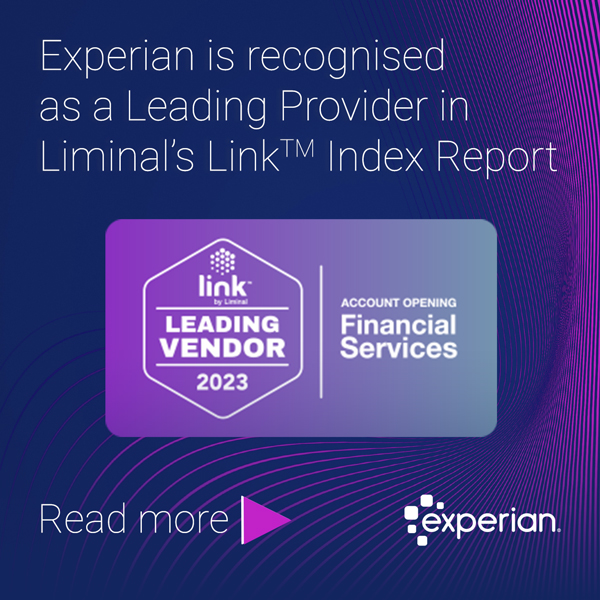Monthly Archives: August 2021

Fraud has been exacerbated by the Covid pandemic, and with total cybercrime costs set to reach $10.5 trillion by 2025 according to Cybersecurity Ventures*, many businesses are looking to protect themselves and their customers from fraudsters. As the world moves further towards digital interactions across services and eCommerce, new fraud targets are emerging, and although financial services are more accustomed to these attacks compared with new targets, they are still favorites among the criminals. KuppingerCole's Leadership Compass report on fraud reduction intelligence platforms, highlights Experian as a leader across product, innovation and market. *Cybersercurity Ventures

The pandemic has impacted everyone differently. With consumers emerging from the crisis with very different credit needs, we take a look at how lenders can navigate an uneven economic recovery when it comes to credit risk decisioning. Download the full Global Decisioning Report: Navigating a new era of credit risk decisioning.

A recent industry-leading analyst report looking at loan origination solutions found that lenders are experiencing high volumes of new loan applications, but many are struggling to process them. This alongside increased consumer demand for improved digital experience, and a shifting credit landscape means lenders are trying transform both to keep operating costs down and meet the needs of a changing market. This tracks closely to findings from our Global Decisioning Report 2021. We look at what is changing, and how the Now Tech: Loan Origination Solutions report advises lenders to move forward. Consumers went online, and have high expectations of the digital experience The pandemic shut down banking and retail locations around the world. Amidst the lockdown, consumers turned online to manage finances, connect with lenders, and buy essential goods and services. The crisis especially accelerated digital adoption for older consumers and created a new digital imperative for lenders wanting to meet customers’ evolving needs. The rise of self-service and new payment methods There was also an increase in the already growing demand for digital self-service in terms of applying for credit and seeking out repayment support. Consumers expect to be able to apply for credit when and where they need it, often using a mobile-friendly device. In return for convenience and security, consumers report that they’re more willing to provide additional personal data. Timely, meaningful credit and repayment offers, convenient interactions, and improved communication with lenders make the exchange worth it. The convenience of digital channels is also creating the opportunity for new payment methods, such as subscription models and Buy Now Pay Later (BNPL). Both are occurring across a range of products and services, from cars to clothes to beauty essentials. Our Global Decisioning Report found that 27% of consumers reported purchasing products using BNPL programs. Traditional lenders will need to consider the needs that the emerging BNPL market meets. This includes making purchases easier for consumers by providing increased payment flexibility. APIs, security, integration, and explainable AI According to the Now Tech report, lenders should look for solutions that allow access to data via APIs for credit decisioning, have strong data security and privacy practices, integrate with third-party technology products and services, and leverage explainable AI for underwriting. Allowing lenders to acquire customers digitally is key, and loan origination solutions provide a digital portal that can be accessed across devices and which supports real-time customer input, document uploads, data aggregation and analysis, and digital signatures. Want to read the full 2021 Global Decisioning Report?

Financial institutions have long been dependent on technology for business operations, resulting in a long history of tech additions, upgrades and vendors. Changes made to legacy IT systems can not only impact customers, but in many cases, the economy too. Often these systems feel safe and familiar, so it can be a difficult choice to make a change. However, over the last year the pandemic has highlighted the need for agility within the market. Responding to changing customer needs in an increasingly digital environment is number one priority. What do we mean by legacy tech? The term legacy tech has a lot of negative connotations. It refers to a set of computer systems, software and technologies that can no longer be maintained or easily updated. The system could be out of support or in extended support. Integration becomes a challenge because different technologies have accumulated over the lifespan of the business, and the associated support levers around it are all different. There is also the challenge of finding the skills to maintain these systems – in-house or outsourced from providers. Maintenance costs can be high – security and resilience test costs will add to this, while performance will drop with the increasing need for work-arounds. Upgrades can be complex, expensive or even impossible on legacy systems, generating extra costs. Financial institutions create their own legacy systems when they start integrating various data sets from different sources. It can happen when the business grows to new locations, new lines of product, extended consumer services, while using different tech from different vendors. Cloud as an enabler for business transformation From the moment code is written and deployed, it becomes legacy. Cloud integration allows for daily code releases and automated upgrades meaning that businesses are constantly adjusting and responding to client needs, regulation and strategic changes. They can instead focus on their business model and innovation, staying relevant and up to date. Budget is directed towards improvements and innovation instead of maintaining the legacy tech. It brings an interesting level of agility, with the ability to respond to the market much more quickly and effectively. How cloud can benefit the customer Cloud-based services have allowed banks to revolutionize onboarding processes and timescales. Processes like KYC (Know Your Customer) can be carried out by partners for a fast and efficient experience. Throughout the lifecycle of a customer, banks can leverage third parties for every part of the journey and ultimately improve customer experience. Beyond the onboarding process, the entire customer lifecycle, from originations to collections, can be transformed by removing friction and using AI to create interest, and ML to make decisions for quick results. Experian has partnered with Open Banking Expo TV to produce a series on Cloud-based solutions. Sign up to watch. Related content

Did you miss these July business headlines? We’ve compiled the top global news stories that you need to stay in-the-know on the latest hot topics and insights from our experts. Anthony Bourdain Deepfake Controversy Points to Pitfalls of AI-Generated Content As synthetic media grows more popular as a creative tool, creators must navigate new ethical ground, reports Adweek's Patrick Kulp. David Britton, VP of Industry Solutions explains why we will see more deepfakes as the technology embeds, and how the ID & Fraud prevention and detection industry is responding. Tech-driven credit management solutions are key for businesses in post-Covid world, says new report The Business Times takes a look at how, according to Experian's latest Global Decisioning report, businesses need to respond and adapt to consumers' growing digital needs after an acceleration in digital interactions during the pandemic. Selfie biometrics for online pet sales and financial services among latest remote onboarding launches Biometric Update uncovers the latest in remote onboarding implementations, reporting on its promising steady pace and highlighting Juniper Research's recognition of Experian's industry-leading ID & Fraud solutions in this field among its peers. Validating Identities In A Digital World Bloomberg's Paul Sweeney and Matt Miller talk to David Britton, VP of Industry Solutions, in this radio piece about the importance of validating identities in a growing digital world, and what we might need to see from ID & Fraud solutions in the future to ensure that individuals are secure online. How Businesses Can Adapt to Rising Customer Expectations Donna DePasquale, EVP of Global Decisioning Software writes in CXO Today about the importance of customer journey in credit risk decision-making, taking businesses through the customer lifecycle to show how to avoid disruption during each digital interaction and touchpoint, while implementing the best decision analytics. Stay in the know with our latest insights:




